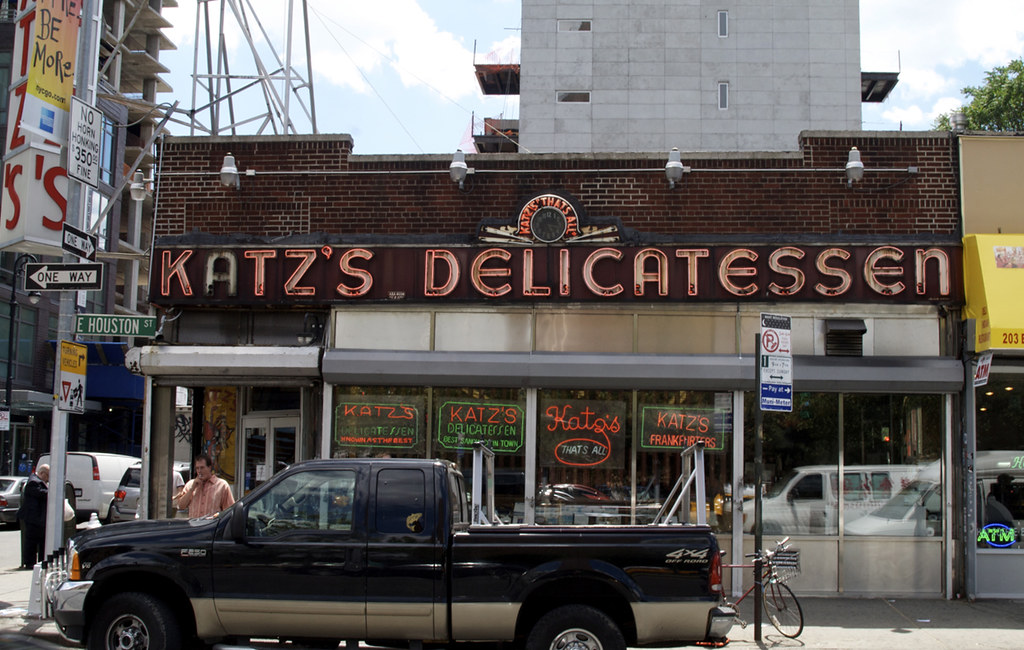If you’re not from one of the great deli capitals of the world, you might not know much about what could quite possibly be the greatest things to ever lay between two slices of rye bread: pastrami. What is pastrami? Loved by New Yorkers and Jewish stomachs the world over, pastrami has just about as much history and cultural significance as it has flavor. As Raphael Magarik said in an article for The Forward, “Jews celebrated bar mitzvahs and weddings with deli meats, but pastrami and other meats also inspired carnal, even erotic desires.”
Smoked meat, salami, corned beef, turkey, and tongue are some of the all stars you often see alongside pastrami at delis around the globe. Some are worth the hype, and others leave you questioning why your grandfather loves it so much. However, if there’s one succulent sandwich meat that’s most definitely worth the hype, it is pastrami.
History of Pastrami

Much like corned beef and other flavor-packed deli meats, pastrami was originally invented by eastern Europeans in an effort to preserve meats prior to the advent of refrigeration. Pastrami was brought to America by Jewish immigrants from Bessarabia (a historical region residing in parts of present day Moldova, Ukraine, and Romania) who immigrated during the latter half of the 19th century.
Prior to immigrating to America, Romanian Jews likely used goose breasts to make their pastrami, as it was inexpensive and complied with the laws of their kosher diet. However, when they came to America, beef plate was cheaper than goose breast, so recipes were changed to accommodate the more inexpensive cut of meat.

As a major destination for Jewish immigrants in the 19th and 20th centuries, New York City is the capital of all things pastrami. Sussman Volk, a Jewish immigrant from Lithuania, is often credited with preparing the first pastrami sandwich in America in 1887. Operating a butcher shop, Volk prepared his pastrami using a recipe he got from a Romanian friend in exchange for watching his friend’s possessions while he went to visit Romania. The butcher shop’s pastrami sandwiches got so popular that Sussman decided to convert the shop into a pastrami sandwich restaurant to meet the high demand.
How Pastrami Is Made
Pastrami is prepared through a lengthy process of brining, drying, seasoning, smoking, and steaming. The brining process is what cures the meat, and most often includes kosher salt, sugar, and pickling spices. After a short drying process, pastrami meats are coated with a variety of spices. Classic recipes include such spices as garlic, coriander, black peppercorn, paprika, clove, allspice, and mustard seed.
Bearing an armor of all these spices, the meat is then smoked for a number of hours. The final step in the pastrami making process is steaming, which helps to break down the connective tissues in the meat. This is what makes pastrami practically melt in your mouth as you eat it.
Where to Find the Good Stuff

The pastrami we know today in North America is synonymous with Jewish immigrant culture. Famed Jewish delis such as New York City’s 130-year-old Katz’s Delicatessen and Carnegie Deli, are world renowned for their towering pastrami sandwiches packed with expertly hand cut meats. These iconic delis have even made cameos in such movies as When Harry Met Sally and Disney’s Enchanted thanks to their pop culture prowess. And because, yes, a pound of cured meat between two slices of bread is the best meal for a hot date.
With such great history behind this smoky, steamed sandwich meat, comes great honor when ordering a pastrami sandwich. If you’re feeling a little peckish next time you’re near a quality pastrami sandwich vendor, make sure your sandwich comes on rye bread with mustard. White bread and mayonnaise are practically a one way ticket to the Deli Jail; and we wouldn’t want you to go there, would we?


